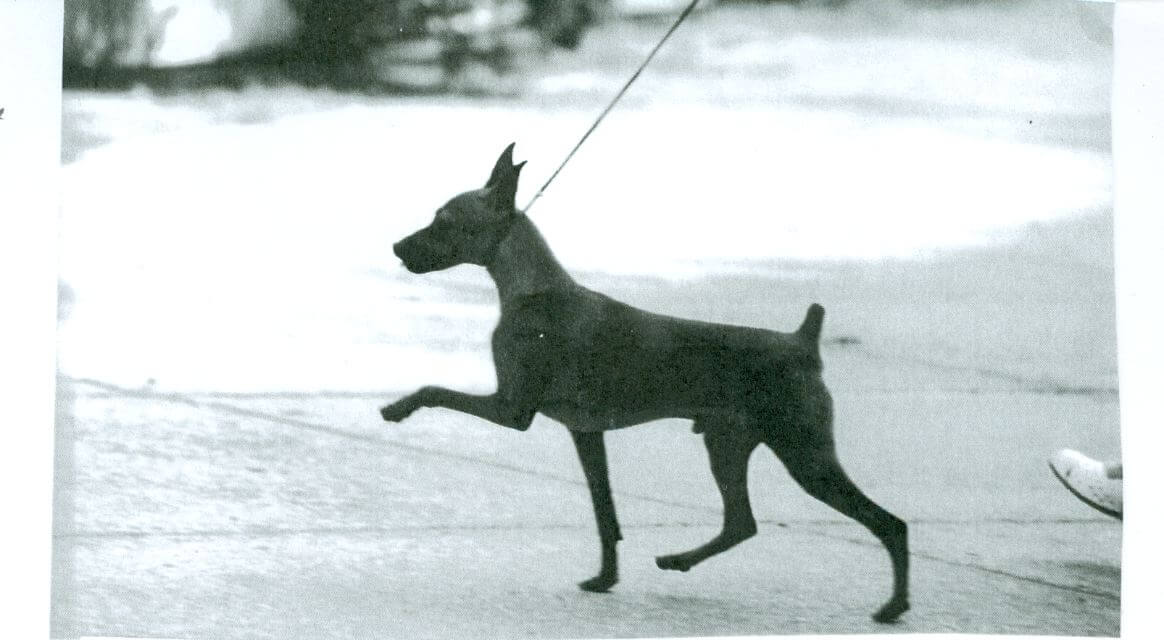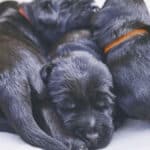Miniature Pinscher History
Let me begin by telling you it is hard to trace the origin and history of the Miniature Pinscher due to a lack of historical facts. But we do believe the breed (REH PINSCHER) now known as the Miniature Pinscher first became known in Germany as its origin.
Time itself has a tendency to obliterate history and to distort it to a great degree. There have been many photos in old books, for several hundred years, which also mentioned the Miniature Pinscher, but there is nothing printed for the history records to the facts of “The King of Toys” origin.
The “Reh Pinscher” was named because he resembled a small red deer found in great numbers in Germany. The Germans continued to breed this type of smooth, red dog for years, and they became very popular as a distinct and recognized breed. They weighed between eighteen and twenty-five pounds. The Toy ranged in size from two and a half to five pounds.
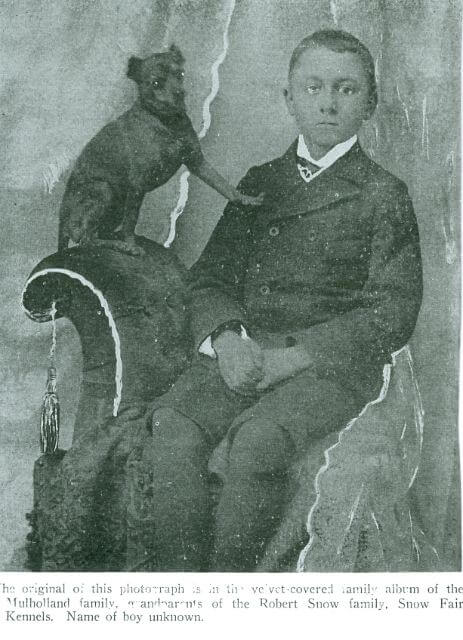
Sometime around the turn of the 20th Century, careful documentation of the breed [had begun], but down through the years, very few facts have emerged; however, a true picture of the Reh Pinscher becomes somewhat clearer as time goes on.
Dog shows first began as a sport in Germany in the year 1863. The first official stud book was published in Hamburg in 1876. In the same year, the first German dog book was published called The Dog. Then, twenty years later, the Reh Pinscher, as the Miniature Pinscher was then called, was found among the registrations of the German Kennel Club. At that time, the Miniature Pinscher was coarse. He came in all sizes and mixtures of colors. He loved stables and rats, and silken pillows in lovely homes. These dogs were more known to be owned by poor farmers for hunting and keeping rats out of the barns and fields, so they would call them the poor man’s hunting companion. A dog of that breed would be unrecognizable for the breed we know today as the Miniature Pinscher.
In 1836, Dr. H. G. Reinchenbach stated that the color was most often black or red, and he thought that the breed came from offspring of a Pug and a Dachshund or an Italian Greyhound and the Dachshund. Or maybe the Black and Tan Terrier came into the background. This we will never know about where the breed originated. The breed has come a very long way since its beginning. The short, cobby body of today’s Miniature Pinscher in no way resembles the Italian Greyhound or the Dachshund.
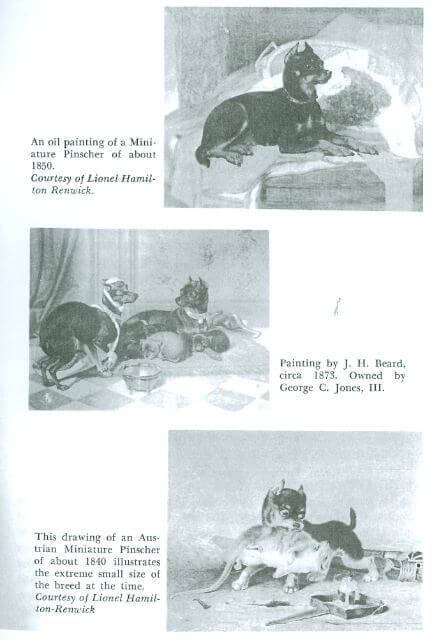
There is no doubt that the breeding of the Reh Pinscher, as a purebred, did not start in Germany until the year of 1870, according to a writer named Weil. Records show that the first Reh Pinscher was shown in Switzerland in 1882 at Aarburg, and very high prices were paid for good specimens.
The very first “Special” show for Reh Pinschers was held at Stuttgart, Germany, on Sept. 16, 1900, with 93 of the little dogs present. At that time, most hair color was black with red markings, and an all-red dog was not favorable. From 1900 to 1914, the breed was found to be very favorable and held great interest as a Toy breed. This is about the time when the all-red color became more acceptable. There was also chocolate-brown color and blue with red markings, a color called harlequin, which was not a pure white but a bluish gray shade.
During WWI, many people kept small dogs, as they ate less food than large ones. Since food was limited for humans at that time, they became very popular with the German people. In 1926, after the war, breeding was again allowed and the Miniature Pinscher began to regain some of its former type and popularity. The Reh Pinscher began to move to Denmark, France, Belgium, Switzerland, and England, importing dogs from German breeding programs.
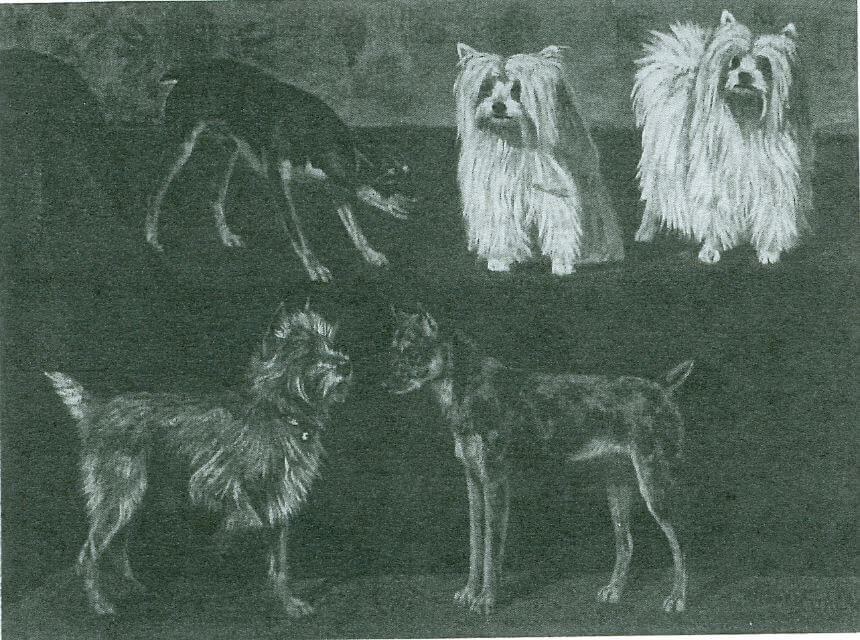
We now have three types of Pinschers: 1. Doberman; 2. German; 3. Miniature. All three vary in size and movement, but they have some likeness to each other. The Miniature Pinscher is the smallest breed of the three, the German is the middle size, and the Doberman is the largest one.
American development of the Miniature Pinscher was registered with the American Kennel Club. The [first AKC registered] dog was a female black and rust and was known as Asta von Sandreuth, her AKC registration #45501 was under the breed name of Pinschers (Toy). She was imported from Germany by Mrs. Seyschab from Pennsylvania. As more and more German dogs came to America, the Miniature Pinscher Club of America was founded in 1929.
The initial entries at shows in the US were in the Miscellaneous Class, and the German Breed Standard was used for judging them. With the national breed club in place, the Min Pin was placed as a member in the Terrier Group until 1930 when it was reclassified upon petition by the parent club (MPCA) as a Toy, under Pinscher (Miniature). The breed’s official name was changed to Miniature Pinscher in 1972.
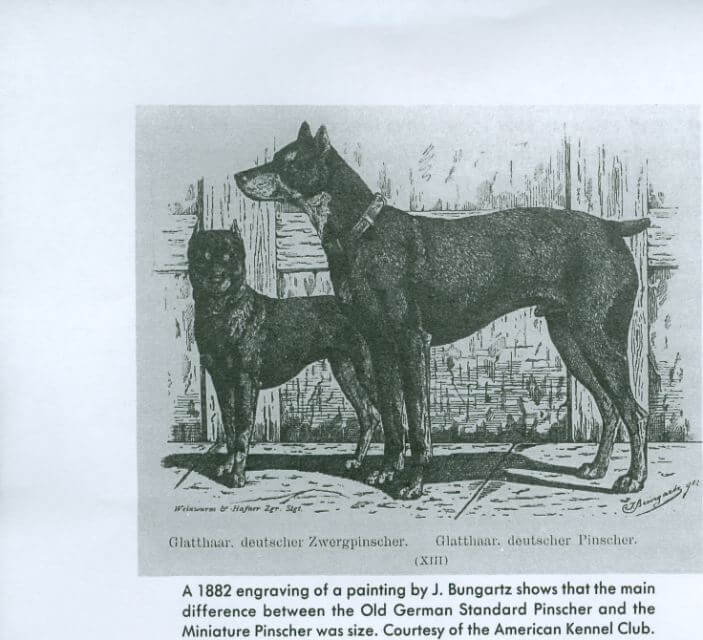
There have been some very well-known breeders in the US who did some wonderful winning in the early years. They were John MacNamana, Dr. Boris Boshell, Mrs. Mazie Booher, Mr. E. W. Tipton, and Ann Dutton, just to mention a few. Now, we are seeing more Min Pins winning all-breed BIS due to a larger gene pool, with good breeding practices and conditioning, and ease of traveling with a dog.
Here in the US, we have smooth, short-haired dogs with lots of attitude, with his eye-catching hackney-like action in front movement, fearless animation, and high spirit. They can have cropped, erect ears or natural erect ears, and docked tails as per our Standard, written and approved by the American Kennel Club.
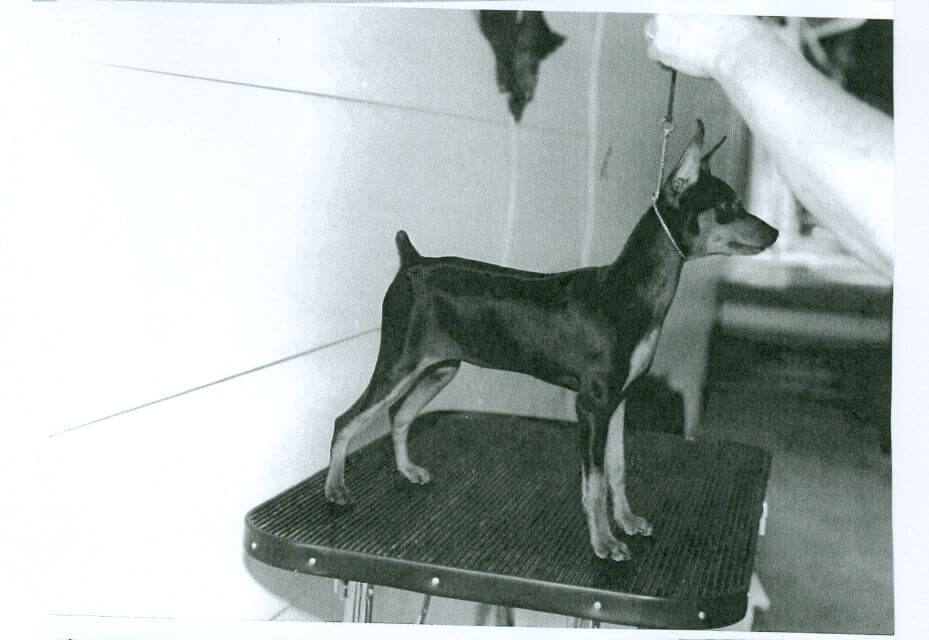
The AKS Min Pin Standard has been revised various times, with the latest being in 1990 with several disqualifications. The Miniature Pinscher Club of America and the American Kennel Club are trying to keep this breed uniform for the future, with judging and breeding to the Standard.
We cannot forget the dogs and early breeders in Europe/America who have come before us, who have allowed us to own such a wonderful breed in our lives, and hopefully, continue to preserve this breed for many years to come.
Hoping this has given you some insight into the history of our breed, even if it is not real clear on the origins in the beginning in Germany. Readers can use the American Kennel Club library as a resource for more information on this subject.
